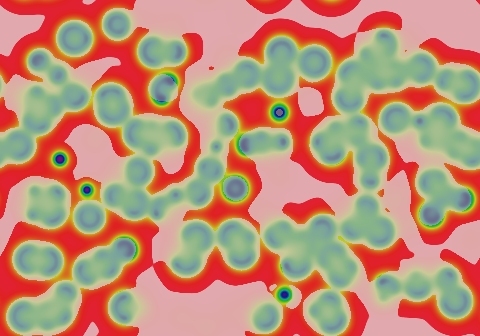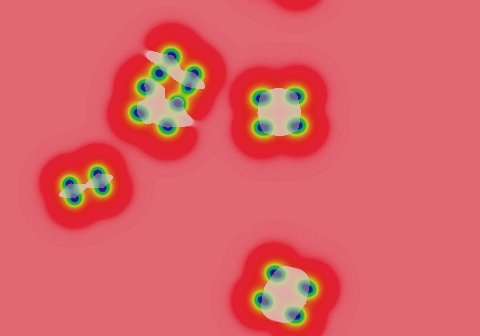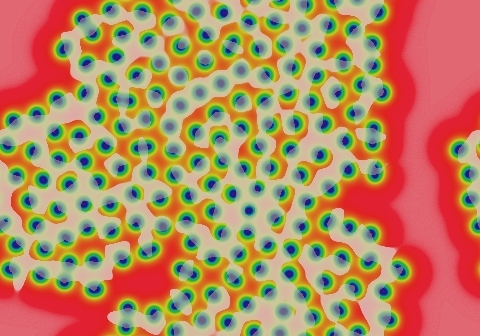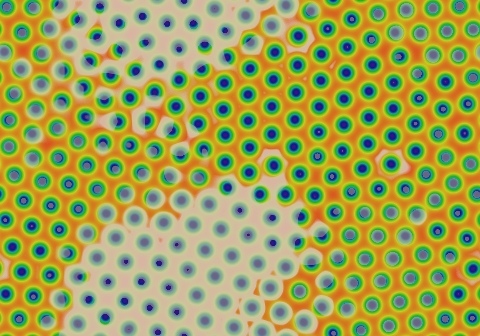Gray-Scott Model at F 0.0220, k 0.0610
These images and movie demonstrate the behavior of the Gray-Scott reaction-diffusion system with σ=Du/Dv=2 and parameters F=0.0220, k=0.0610.
Some proto-solitons die out after a few oscillations; others survive and begin mitosis (generation interval of about 850 tu). When the space is full, the spots arrange in a hexagonal pattern, and pulse in a coordinated fashion, with a period of about 222 tu (clearly seen in video as the light-coloured {du}/{dt} component). Occasionally (about every 50,000 tu in this example) a group of solitons (a few or a couple dozen) will suddenly die off, and the void thus created is immediately filled in.
Categories: Pearson ζ; Wolfram 3-a (glossary of terms)
 increase F increase F
 | |||
 decrease k  |


|
15 frames/sec.; each fr. is 35 iter. steps = 17.5 tu; 1800 fr. total (31,500 tu) |  increase k 
|

|


| ||

 |
In these images:
- Color indicates level of u, ranging from purple (lowest u values) through blue, aqua, green, yellow and pink/red (highest u values)
- Areas where u is increasing are lightened to a light pastel tone; where u is decreasing the color is vivid.
- In areas where u is changing by less than ±3×10-6 per tu, an intermediate pastel color is seen. This includes areas that are in steady state or equilibrium.
''tu'' is the dimensionless unit of time, and ''lu'' the dimensionless unit of length, implicit in the equations that define the reaction-diffusion model. The grids for these simulations use Δx=1/143 lu and Δt=1/2 tu; the system is 3.2 lu wide. The simulation meets itself at the edges (periodic boundary condition); all images tile seamlessly if used as wallpaper.
Go back to Gray-Scott pattern index
This page was written in the "embarrassingly readable" markup language RHTF, and was last updated on 2015 Nov 07.
 s.27
s.27